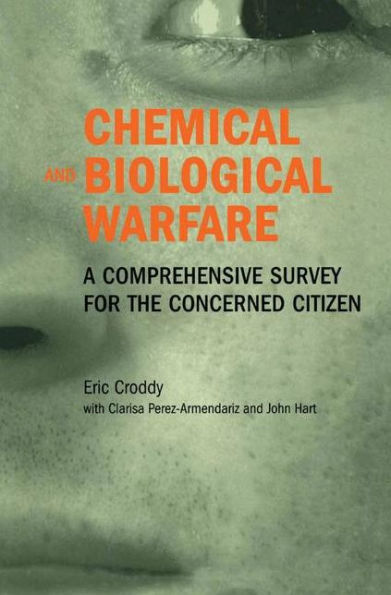Why study chemical and biological warfare (CBW)? At the very lowest level, the topic lends itself to morbid curiosity. The scale on which "bugs and gas" can be used to kill people, and the way in which they cause death, can make for gruesome reading. Then there is the matter that these weapons are considered, rightly or wrongly, to be abominable, and those who wish to confirm that opinion will find in studying CBW plenty to abhor. Readers in these two categories are likely to be disappointed by what they will find in this book.
Fear is another motive for study. One can hardly read the paper or listen to the news today and not, sooner rather than later, hear reports about the belligerent nations, repressive regimes, and terrorist organizations that have access to, or are working on the development of, these weapons. The mere existence of CBW armaments, we are told, poses a significant threat to the stability of international order. Even if one believes that the nuclear stand-off between superpowers-the Balance of Terror that characterized the Cold War-is a thing of the past, we now have a whole new cast of characters to worry about. They are less well understood than our old adversary the Soviet Union, and less predictable. They operate as states (or sometimes "rogue states"), but also in the shadows, in league with networks of terrorists, global criminal enterprises, and splinter groups representing every conceivable type of fanaticism. And they will, it is almost certain, push us into a whole new kind of decades-long war. For readers arriving with this point of view, I hope this book will serve as a kind of corrective.
It is not my belief that CBW armaments are benign, or that states and sub-state organizations are not wishing for or even planning chemical or biological attacks against the United States and the rest of the industrialized world. I am not someone who places great faith in the good will and sober judgment of, say, Saddam Hussein. In fact, if I were a betting man, I would put my money on the likelihood that we will see chemical or biological weapons attacks in the not-too-distant future. But where this book perhaps differs from some more popular discussions of the topic is in its argument, in its underlying theme, that biological and especially chemical attacks of any magnitude are extremely difficult to plan, develop, execute, and fund. Certainly it is true that a fanatical cult could release nerve agent on a crowded subway car, as happened in Tokyo in March 1995. And the ultimate splinter group, a single deranged individual, may be perfectly capable of killing, injuring, or incapacitating large numbers of individuals in any number of ways chemical or biological. If you add to these all the belligerent major powers, rogue states, and oppressive regimes worldwide (and factor in their client terrorist organizations as well), you can imagine no end of mischief-gas attacks, reservoir poisonings, anthrax outbreaks, and so forth. But what we have to do is dwell less on nightmare scenarios and try to learn-as calmly and clearly as possible-what CBW agents are, how they work, who has used them in the past, and what is being done to limit their proliferation. Fear may be a good motivator, but it is not, as far as I can tell, an aid to understanding.
How This Book Is Organized
This book is divided into three major parts. In Part I, "Gas, Bugs, and Common Sense," there is a brief introduction to and definition of CBW (Chapter 1), including descriptions of why and how nation-states and "sub-states" (for example, terrorist organizations) develop chemical and biological weapons. Chapter 2 then lists, in a fairly straightforward manner, the nations that have CBW capabilities, along with brief descriptions of the particular agents they possess. In Chapter 3, we take a look at some of the threats we're likely and unlikely to face.
Part II is focused on chemical weapons. In Chapter 4, there are rather extensive descriptions and discussions of more than fifty of the best-known CW agents. Chapter 5 is a history of chemical warfare from ancient times to the present. And Chapter 6 discusses in detail the workings of the 1992 Chemical Weapons Convention (CWC), by all accounts one of the most effective international treaties written. (But not, as the chapter makes clear, without its limitations.) Included in the chapter is a lengthy discussion of the extremely difficult matter of verification, and the highs and lows of the international community's relationship with Iraq, an unwilling signer of the accord.
Part III, which more or less mirrors Part II, focuses on biological agents and weapons, with Chapter 7 describing more than forty biological agents in detail. Chapter 8 focuses on BW armaments in history, again covering a broad span. Chapter 9 covers the Biological Weapons and Toxins Convention of 1972 (BWTC), a work of the best intentions but not much good effect. (The success of the CWC and the comparative ineffectiveness of the BWTC are discussed in some detail.) Finally, a whole chapter (Chapter 10) is devoted to the issue of vaccinations and biological warfare.



